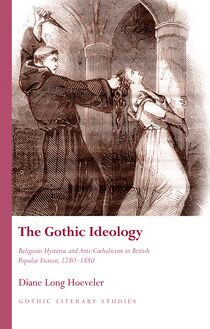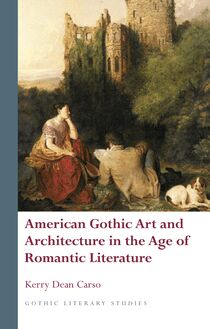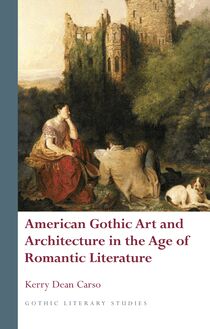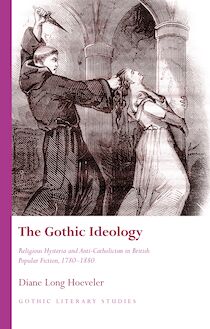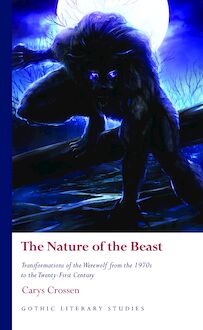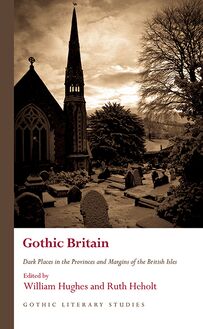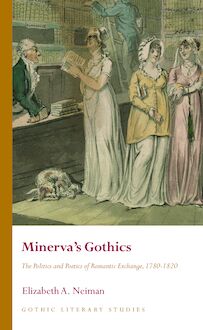-
 Univers
Univers
-
 Ebooks
Ebooks
-
 Livres audio
Livres audio
-
 Presse
Presse
-
 Podcasts
Podcasts
-
 BD
BD
-
 Documents
Documents
-
- Cours
- Révisions
- Ressources pédagogiques
- Sciences de l’éducation
- Manuels scolaires
- Langues
- Travaux de classe
- Annales de BEP
- Etudes supérieures
- Maternelle et primaire
- Fiches de lecture
- Orientation scolaire
- Méthodologie
- Corrigés de devoir
- Annales d’examens et concours
- Annales du bac
- Annales du brevet
- Rapports de stage
La lecture à portée de main
Vous pourrez modifier la taille du texte de cet ouvrage
Découvre YouScribe en t'inscrivant gratuitement
Je m'inscrisDécouvre YouScribe en t'inscrivant gratuitement
Je m'inscrisEn savoir plus
Vous pourrez modifier la taille du texte de cet ouvrage
En savoir plus

Description
Sujets
Informations
| Publié par | University of Wales Press |
| Date de parution | 30 mars 2013 |
| Nombre de lectures | 0 |
| EAN13 | 9781783160334 |
| Langue | English |
Informations légales : prix de location à la page 0,2174€. Cette information est donnée uniquement à titre indicatif conformément à la législation en vigueur.
Extrait
GEORGE ELIOT AND THE GOTHIC NOVEL
SERIES PREFACE Gothic Literary Studies is dedicated to publishing groundbreaking scholarship on Gothic in literature and film. The Gothic, which has been subjected to a variety of critical and theoretical approaches, is a form which plays an important role in our understanding of literary, intellectual and cultural histories. The series seeks to promote challenging and innovative approaches to Gothic which question any aspect of the Gothic tradition or perceived critical orthodoxy. Volumes in the series explore how issues such as gender, religion, nation and sexuality have shaped our view of the Gothic tradition. Both academically rigorous and informed by the latest developments in critical theory, the series provides an important focus for scholarly developments in Gothic studies, literary studies, cultural studies and critical theory. The series will be of interest to students of all levels and to scholars and teachers of the Gothic and literary and cultural histories.
SERIES EDITORS
Andrew Smith, University of Sheffield Benjamin F. Fisher, University of Mississippi
EDITORIAL BOARD
Kent Ljungquist, Worcester Polytechnic Institute Massachusetts Richard Fusco, St Joseph’s University, Philadelphia David Punter, University of Bristol Chris Baldick, University of London Angela Wright, University of Sheffield Jerrold E. Hogle, University of Arizona
George Eliot and the Gothic Novel
Genres, Gender, Feeling
Royce Mahawatte
UNIVERSITY OF WALES PRESS CARDIFF 2013 -->
© Royce Mahawatte, 2013
All rights reserved. No part of this book may be reproduced in any material form (including photocopying or storing it in any medium by electronic means and whether or not transiently or incidentally to some other use of this publication) without the written permission of the copyright owner. Applications for the copyright owner’s written permission to reproduce any part of this publication should be addressed to the University of Wales Press, 10 Columbus Walk, Brigantine Place, Cardiff CF10 4UP.
www.uwp.co.uk
British Library CIP Data A catalogue record for this book is available from the British Library.
ISBN 978-0-7083-2576-6 e-ISBN 978-1-78316-033-4
The right of Royce Mahawatte to be identified as author of this work has been asserted in accordance with sections 77 and 79 of the Copyright, Designs and Patents Act 1988.
Typeset in Wales by Eira Fenn Gaunt, Cardiff Printed by CPI Antony Rowe, Chippenham, Wiltshire
C ONTENTS
Acknowledgements
Note on Names
List of abbreviations
Prologue
Introduction: ‘half-womanish, half-ghostly’: George Eliot and the Inheritance of the Gothic
Part I Reimagining the Genres of Feeling
1 ‘as if there was a demon in me’: ‘Janet’s Repentence’ and the Evangelical Gothic
2 ‘with two names written on it’: Sensation Narratives in Adam Bede
3 ‘of one texture with the rest of my existence’: ‘The Lifted Veil’ and the Tale of the Supernatural
Part II Uncanny Women, Fearing Men
4 Counterfeit Gothic Heroines in The Mill on the Floss and Middlemarch
5 Romola and Felix Holt, The Radical : The Pursuits of Paranoid Men
6 Finale: Daniel Deronda : Sensationalized Society, Gothicized Self
Epilogue
Notes
List of Works Cited and Consulted
A CKNOWLEDGEMENTS
This book has been in development for a long time and has been a part of so many conversations, that it would be impossible to thank everyone who has contributed to its making. A number of people have been particularly vital during this long gestation however. I would like to thank my supervisors of the original research: Dinah Birch, for her encouragement, ideas and support: Patricia Ingham, for her invaluable consolidation, and Helen Small for her constructive comments. I am also grateful for the financial assistance from the British Academy, the Pilkington Trust, and the Meyerstein Fund; to Trinity College, Oxford for awarding me the scholarships I received at this early stage; and to Virginia Murray at the John Murray Archive. In addition, I am also grateful to Richard Proudfoot, Paul Kenny and Leone Ormond, whose inspiring teaching set the scene for my interest in George Eliot and Victorian literature in general.
This publication would not have been possible without Benjamin Franklin Fisher and Andrew Smith, who believed in the project; the reviewers whose comments helped me to push this study further. Parts of this book have been reproduced with kind permission from Manchester University Press and Taylor Francis Journals, for which I am grateful; as I am for the permission from the estate of Steven Spurrier for the use of ‘Janet on the doorstep’ on the cover; and to Panter and Hall for their assistance here. I would like to thank my parents, sister, family friends and colleagues for their support and encouragement, and all my students, for talking to me in different ways about literary forms, abstractions and exponents. I would also like to thank especially Marina Angadi, John Bryden, Hilary Cave, Hilary Edwards, Mina Gorji, Kitty Hauser, William Hughes, Joy Lo Dico, Patrick O’Malley, Wendy Piatt, Catherine Spooner, and Christian and Anne Ward.
Finally, I thank Luke Robinson for his care and love which have made so many things possible.
Material from this book has been published as the following: ‘“life that is not clad in the same coat-tails and flounces”: the silver fork novel, George Eliot and the fear of the material’, Women’s Writing , special issue: Silver Fork Novels , 19/1 (2009), 323−44 ( www.tandfonline.com ); ‘“Beautiful lips kissing holy skulls and other emptinesses ecclesiastically enshrined”: the counterfeit Gothic heroine in Middlemarch ’, Gothic Studies , 10/2 (2008), 121−36; and ‘Daniel Deronda’s Jewish panic’, in W. Hughes and A. Smith (eds), Queering the Gothic (Manchester: Manchester University Press, 2009).
N OTE ON N AMES
Throughout her life, Mary Anne Evans used a range of different names to refer to herself. For scholars researching into her life and work, this presents a problem of nomenclature. In this book, ‘George Eliot’ denotes the novelist and the letter-writing, literary persona. ‘Marian Evans’ will be used to refer to the individual, the translator, the journalist for the Westminster Review , and the woman who, throughout her life, read and responded to a range of Gothic genres. When the difference between these personae is unclear, I have used ‘George Eliot’ for convenience. In the notes, I have followed Gordon Haight’s convention of calling the writer of the letters ‘George Eliot’ even when Marian Evans was not corresponding as an author.
A BBREVIATIONS
Letters : The George Eliot Letters, ed. Gordon S. Haight, 9 vols (New Haven; Yale University Press, 1954−78)
Essays : Essays of George Eliot , ed. Thomas Pinney (London: Routledge and Kegan Paul, 1963)
Haight, George Eliot : Gordon S. Haight, George Eliot: A Biography (Oxford: Oxford University Press, 1968)
ELH: English Literary History NCF: Nineteenth-Century Fiction NCL: Nineteenth-Century Literature PMLA: Publications of the Modern Languages Association of America DNB: Dictionary of National Biography n.d.: No date shown
Theodora: … As for the Jewish element in Deronda, I think it a very fine idea; it’s a noble subject. Wilkie Collins and Mrs Braddon would not have thought of it, but that does not condemn it. It shows a large conception of what one may do in a novel.
Henry James, ‘ Daniel Deronda : A Conversation’
It was Tito who felt that clutch. He turned his head, and saw the face of his adoptive father, Baldassare Calvo, close to his own head.
The two men looked at each other, silent as death: Baldassare, with dark fierceness and a tightening grip of the soiled worn hands on the velvet-clad arm; Tito, with cheeks and lips all bloodless, fascinated by terror. It seemed a long while to them — it was but a moment.
The first sound Tito heard was the short laugh of Piero di Cosimo, who stood close by him and was the only person that could see his face.
‘Ha, ha! I know what a ghost should be now.’
George Eliot, Romola
‘You will certainly go mad in that house alone, my dear. You will see visions. We have all got to exert ourselves a little to keep sane, and call things by the same names as other people call them by.’
George Eliot, Middlemarch
I believe I was held to have a half-womanish, half-ghostly beauty; for the portrait-painters, who are thick as weeds at Geneva, had often asked me to sit to them.
George Eliot, ‘The Lifted Veil’
So many strange thoughts have crossed my mind every day, that events which would make a life-lasting impression on others, pass like shadows before me, while thoughts appear like substances. Emotions are my events—
Charles Maturin, Melmoth the Wanderer
This book is dedicated to my parents, Ranjith Chandrasinghe Mahawatte (1925−86) and Jenita Florence Mahawatte.
Prologue
In the final chapter of The Mill on the Floss (1860), the shunned Maggie Tulliver, now lodging in riverside digs, contemplates answering a love letter from Stephen Guest. Outside the rain is falling.
With a cry of self-despair, Maggie fell on her knees against the table, and buried her sorrow-stricken face. Her soul went out to the Unseen Pity that would be with her to the end. Surely there was something taught her by this experience of great need; and she must be learning a secret of human tenderness and long-suffering, that the less erring could hardly know? ‘O God, if my life is to be long, let me live to bless and comfort —. At that moment Maggie felt a startling sensation of sudden cold about her knees and feet: it was water flowing under her. She started up: the stream was flowing under the door that led into the passage. She was not bewildered for an instant — she knew it was the flood! 1
This passage, in fact this very moment of interruption in the novel, when Maggie senses the water and realizes that the flood is upon her, is a significant moment in V
-
 Univers
Univers
-
 Ebooks
Ebooks
-
 Livres audio
Livres audio
-
 Presse
Presse
-
 Podcasts
Podcasts
-
 BD
BD
-
 Documents
Documents
-
Jeunesse
-
Littérature
-
Ressources professionnelles
-
Santé et bien-être
-
Savoirs
-
Education
-
Loisirs et hobbies
-
Art, musique et cinéma
-
Actualité et débat de société
-
Jeunesse
-
Littérature
-
Ressources professionnelles
-
Santé et bien-être
-
Savoirs
-
Education
-
Loisirs et hobbies
-
Art, musique et cinéma
-
Actualité et débat de société
-
Actualités
-
Lifestyle
-
Presse jeunesse
-
Presse professionnelle
-
Pratique
-
Presse sportive
-
Presse internationale
-
Culture & Médias
-
Action et Aventures
-
Science-fiction et Fantasy
-
Société
-
Jeunesse
-
Littérature
-
Ressources professionnelles
-
Santé et bien-être
-
Savoirs
-
Education
-
Loisirs et hobbies
-
Art, musique et cinéma
-
Actualité et débat de société
- Cours
- Révisions
- Ressources pédagogiques
- Sciences de l’éducation
- Manuels scolaires
- Langues
- Travaux de classe
- Annales de BEP
- Etudes supérieures
- Maternelle et primaire
- Fiches de lecture
- Orientation scolaire
- Méthodologie
- Corrigés de devoir
- Annales d’examens et concours
- Annales du bac
- Annales du brevet
- Rapports de stage

